Dear Hearts and Gentle People (Social Activities and Organizations)
by Janet Firman
Social activities in Warwick Township date back to when church-related activities and house parties in a neighbourhood were the main social get-togethers that families had. Many such traditions are still carried on in the Warwick community today, but have branched out to include many more organized activities. Much of what is included in this chapter is from memories of people who lived in Warwick for many years.
During the early 1900s Russell Duncan kept a diary of daily events. Like many diaries the entries may have seemed mundane at the time of writing, but this one especially gives a glimpse of the past that we may not be familiar with. Visits with neighbours were very regular. Friends and relatives came for stays that could be a week or two. People traveled much more than we would expect. The bicycle was an important means of travel that allowed individuals to move about. Young people could travel distances easily and quickly under their own power. Train travel also brought people together more quickly that we might imagine.
Sunday Thompson, in reading old local newspapers noted some of the travels. Some examples from the Watford Guide-Advocate that she chose include:
Dec. 30, 1892:
Mr. Robert McNaughton and bride, Miss M. J. Healey, arrived home from Manitoba.
Mr. Wm. Williamson of Strathclair, Man. is home on a visit.
The remains of the late Mrs. (Bessie Herbert) Laurie, of Regina, were interred in the English cemetery, Warwick.
The Forest Free Press reported the following selections:
Aug. 24, 1899:
George Brent left for Chicago Monday to visit relatives.
W. A. Rose left Tuesday for Brandon, Manitoba.
Aug. 31,1899:
Mrs. Hugh Ross visited her mother in Port Huron and Charles I. Lumby is home on a visit from South Dakota.
Food-related activities
There were several farms around Arkona that grew strawberries. Loaded wagons would leave Arkona in the evening with lighted lanterns, front and rear, headed for market towns such as London and Sarnia. In 1904 strawberries were selling at four boxes for 25 cents. Pickers were paid one and a half cents per box. It is reported that a Mrs. Thomas was the fastest picker and earned as much as $1.50 per day. Janet Firman recalls picking raspberries in the late 1930s and early 1940s for neighbours Jack Rowland and Jim Evans of nearby Arkona for four cents a box for black caps and five cents for raspberries. She recalls, “I made $9.00 and bought myself a beige jacket for high school.”
Berries did not travel well. Philip Austin of Arkona used a special wagon to ease the bruising of the soft fruit when he shipped his strawberries to the Sarnia Farm Market every Saturday morning. The berry wagon was a lighter version of a Conestoga wagon, with hoops and a canvas roof.
Knox Presbyterian Church, Warwick: Picnic at Ipperwash, early 1900s. Courtesy H Ross.
Locally the berries were served at strawberry socials, with cake and ice cream or tea biscuits. Sowing the Good Seeds: The History of Arkona United Church records that “One event that was held annually was the Strawberry Social on the lawn of the church parsonage.” In June, 1899, the Forest Standard reported that “after the strawberries and cake are disposed of, a choice of music and literary program will be rendered in the church, consisting of music by the choir and the Arkona String Band.” Recently Ravenswood United Church held their annual Strawberry Social in Forest, hosting a full course meal.
Janet recalls that, when she was a child, strawberry socials and fowl suppers were big events every summer and fall. They were held in the old large church sheds where usually the horse and buggies were left during church services. Knox Presbyterian Church, Bethel Methodist and St. Mary’s Anglican Church all held such events in their sheds.
Barn Dance Poster. Courtesy Lambton Heritage Museum.
It is reported in a newspaper clipping that in 1915 a garden party was held at the Rectory in Warwick Village with a band from Kerwood playing. Speakers came from Watford, Forest and Kerwood. Ice cream and refreshments were served. Tickets were 25 cents for adults and 15 cents for children. Proceeds went to the Red Cross Fund.
Linda Koolen recalls that “for years our church had a big picnic at Ipperwash Park, with races and games. Later years it was an evening wiener roast at Rock Glen. Hillsborough was also a favourite place for picnics.”
The Kerwood-Bethesda United Church held a ham and strawberry supper. When the supper was held at Bethesda it would cost 25 cents and if there was food left over, they had a 10 cent supper the next evening.
Until 2003 the United Church held their annual turkey supper in the church basement. This tradition had been started at least 40 years earlier. Many of the people who helped prepare food and serve were not members of the church but enjoyed the camaraderie. Most years over 600 meals were served. People came from as far away as London, Sarnia and Detroit to this supper, known for its creamed corn and pies. People such as Doris Tanton would make more than 30 pies. Her butterscotch pie was a favourite.
Warwick Volunteer Fire Department barbecue: Laverne Goodhill, Lyle Ferguson, Diane Ferguson (back to camera), Glen Ferguson, Don MacKenzie. The Warwick Firemen hold pancake breakfasts and various other meals to raise funds for equipment. Courtesy P Ferwerda.
Other common events were oyster suppers. Janet Firman recalls them being held in the Arkona Women’s Institute Community Hall. Oysters were eaten raw with salt and pepper and vinegar on them or prepared in various ways. According to the Watford Guide-Advocate, in 1914 Fred Thompson found a real pearl in an oyster at an oyster supper. Margaret Lester recalls neighbourhood oyster suppers each year held at Harvey Vance’s, a neighbour on 6 Sideroad, followed by music on various instruments and singing.
In January 1915, Arnold Parker of Watford took a load of neighbours with his team and sleighs to the home of friends for an old-fashioned corn-husking bee. Over 50 bushels of corn was husked. Afterwards, an oyster supper was enjoyed, followed by cake and pie.
Janet recalls that box socials were an enjoyable event with the young people. The girls would pack a box lunch. A lunch would be auctioned off to the boy with the highest bid. This was very exciting, especially if there was a certain girl with whom he wanted to share the lunch.
Warwick Firemen participating in parade through Warwick Village. Courtesy P Ferwerda.
During the winter months, card parties and old-time dances in schoolhouses were favourite get-togethers. Everyone, including babies, came to these events; paid babysitters were uncommon. Music for the parties consisted mainly of violin and piano, often played by Reg Freer and Margaret (Cran) King. Everett Herrington used to call all kinds of square dances. Other dances, such as waltzes, jigs, two steps, step dancing, schottische, polkas and reels, were all enjoyed. A lunch brought by the ladies was always served at midnight and after lunch the party continued. These dances seem to come to an end about the start of the Second World War.
Music
In 1969 the Watford Guide-Advocate states that Cliff Callaghan purchased the Lyceum Hall in Watford. For many years this was the site of modern and old-time dances. Peg Thompson’s old-time band from Petrolia often played there. Peg played the violin and Verna Firman played the piano. Reg Freer’s band from Kerwood was another prominent group. Name bands were brought in for special occasions from Wingham, London, Stratford, Sarnia, Chatham and other places.
Roger Quick and the Rainbows: Glen Buttery, Roger Quick, Norma Quick, Bruce Sharpe. Courtesy R Dunlop.
Jeanne Smale told of her husband Wes and his band, the Country Kings, which included Ray Watson on the violin, Rob Sharpe on the drums, Wes, Gary Muxlow and Don Cook on guitar with Don Cook singing. Carol (Quick) McAlpine, a sister of Roger, talked about Roger Quick and the Rainbows playing at local functions in the early 1970s. Roger’s wife Norma and Bruce Sharpe played guitar while Barb Saunders sang.
The Forest Legion Bagpipe Band was formed and led by Bruce Siddall in 1959. They played in many cities in Canada, the United States and in Europe with the Ontario Legion Massed Band.
The Forest Excelsior Band is one of the oldest continuous civilian bands in Canada. It was organized as a marching band in 1884 by R. A. Hill, who was the first conductor and also the first Reeve of Forest. He was succeeded by George McIntosh who remained the director for 25 years until his death.
A newspaper report from the 1890s or early 1900s indicates that “the Annual Excursion of the Excelsior Band to Detroit took place last Thursday — Civic Holiday, with nearly 400 passengers. The day was fine and warm and the ride down the river was very much enjoyed. The train left Forest in good time, giving a few hours in Detroit. Returning the train arrived here about 11 o’clock.”
Forest Pipe Band, July, 2004. Pipers: Nicholas Wood (Drum Major), Noni Seabrook, Celia Gilfoyle, Wayne Fisher (Pipe Major), Eric Brown, Eddie Babcock, Don McKellar, Eric Klaasen, Bruce Harmer. Drummers: Kyle Stanik, Adam Kristoferson, Norm Humphrey, Sarah Heath, Rob Porchak (Drum Sergeant), Ellen Andriash. Courtesy C Gilfoyle.
During the early 1930s the band gained recognition at Canadian National Exhibition contests. It also performed as part of minstrel shows. Also during the 1930s a junior band was formed under the leadership of Cy Freele.
The senior band was on the verge of being discontinued when they decided to secure a resident bandmaster. Through the Forest Rotary Club, arrangements were made for Ernest Wetton and his family to move to Forest in December 1956 to take up the duties of bandmaster. A youth band was formed in the fall of 1957 under the sponsorship of the Forest Kiwanis Club. The band played numerous parades and concerts over a wide area. An annual band tattoo was held each summer. Mr. Wetton conducted the band for 32 years.
The first bandstand was located in front of the Town Hall. Later it was beside the Canadian National Station and then in Coultis Park. Sunday evening concerts were held in Coultris Park. For many years the band practised on Monday evenings in the band room in the Town Hall.
In 1984, the band celebrated its centennial by playing in Ottawa on Parliament Hill on Canada Day. Later that summer, the band also played at Queen’s Park in Toronto. At that time the band was a concert band with 40–45 members.
Forest Excelsior Band, Queen’s Park, Toronto, 1984. The Excelsiors celebrated their centennial by playing on Parliament Hill, Ottawa on Canada Day, at Queen’s Park and at many venues in Lambton County. Back row: Gerry Morrison, Glenn Kechnie, Tom ?, Gord Ward, Eric Butt, ?, Jeff Bender. Third row: Chuck Mallette, Jeff Weaver, ?, Rick Hext, Tom Hales, Terry Crabbe, Alison Ager, Paul Janes, Jim Murray, Norm Mumberson. Second row: Frank Brennen, Bob Hext, ?, ?, Larry Butt, Len Humphries, Sid Fletcher, Martin Quenneville, ?, Jeannette Bicknell, ?. Front row: Gord Tohill, Floyd McIntyre, JoAnne Greaves, Daphne Butt, Tim Hummel (Director), Bob Enns, Linda Anderson, Dawn Crabbe, Sandy ?. Courtesy P Janes.
Watford Silver Band. Courtesy G Richardson.
In the late 1980s, some band members began playing “big band”-style jazz on their own, before regular band practice. Eventually, enough members decided that the band should change from being a concert band into a dance band. After that decision was made, the band began playing dances, anniversaries, high school proms and other celebrations.
The 2008 Excelsior Band is made up of 15–20 volunteers who enjoy playing “big band”-style music. The members come from Forest, Wyoming, London, Watford, Sarnia and other nearby localities. The band practices most Tuesday evenings from 7:30–9:30 in the music room of North Lambton Secondary School (NLSS).
The band continues to play five to ten events annually from September to July. Usually, the band takes time off for school holidays because many of the members are school teachers.
The current director is Dan Dumais, a drama and music teacher at NLSS. Other directors in the past thirty years have been Tim Hummel, Marco Rnic and Dave Williams. For the past several years their vocalist has been Donna Faye Milton of London. Previous vocalists were Theresa Wallis of Watford and Jim Quenneville of Watford.
Memories of Village states that the Silver Band of Watford performed at the 1897 East Lambton Fall Fair. In 1915 the Watford Concert Band was active. It is noted in the Forest Free Press in November 1899 that the Warwick Piccolo Band marched to the English Church (St. Mary’s). A few years later the Forest Free Press noted a concert in the Orange Hall with proceeds for the Fife and Drum Band to buy new instruments.
Taxandria Community Centre was set up as a limited co-operative and built without aid from any level of government. More than 500 shares were sold to raise enough money. Private individuals gave of their time, energy and money to build a large auditorium, bar room and regulation size soccer field on Arkona Rd. south of Arkona. Taxandria was officially opened in December 1970. “Tax” was used for public meetings, family receptions, dances, concerts and entertainment. In 2005 Taxandria shareholders voted to close the building, due to increasing costs, fewer members on the board of management and changing social ways. The building and property were later sold.
Other fun activities
One-room school Christmas concerts and Sunday School concerts were highlights of the season for children. Preparations started in early December, with much work being put into plays, drills, pantomimes, recitations and music. The evening closed with Santa Claus appearing and giving out gifts. The schools were always packed with children and relatives
In its early days the famous P. T. Barnum brought his travelling circus to Warwick and drew a crowd from the shores of the St. Clair River to the waters of Lake Huron. This must have been sometime between 1870 and 1880, after Barnum started this business and before he partnered with Bailey. County constable James Furzer Elliot remembered the circus when he spoke with Kate Connolly in a 1920s interview. He said the circus acts drove from London to Sarnia in big vans (before the railway came through). The original Tom Thumb and his wife were there, as were six tiny Shetland ponies and 50 span of mules. The elephants broke the bridge over the creek in the village and played in the water for some time. Part of the act was a girl walking a tightrope.
Reo Theatre building, Watford, 1957. Courtesy G Richardson.
In the 1930s and 1940s carnivals and minstrel shows with sideshows and games travelled the country from one town to another.
The Watford Fire Hall even has a poster of a local Chautauqua event. Chautauqua originated in the United States in the late 1800s. To its supporters it meant a chance for the community to gather for three to seven days to enjoy a course of lectures on a variety of subjects. Audiences also saw classic plays and Broadway hits and heard a variety of music from Metropolitan Opera stars to glee clubs to bell ringers. Many saw their first movies in the Circuit tents. Most important, the Circuit Chautauqua experience was critical in stimulating thought and discussion on important political, social and cultural issues of the day.
The Reo Theatre in Watford opened in 1946. George Tanton, a Watford resident, looked after its operation. It was a very booming entertainment centre every evening and every weekend. Florence Adams from Watford worked as a matron at the Reo Theatre in her teen years, ushering people. The theatres showed a lot of musical films starring Bing Crosby, Roy Rogers, Nelson Eddy, etc. Admission was a dollar for adults and fifty cents for children. Due to the arrival of television, big screen theatres in the cities and the changing of times, the theatre closed in 1954.
Skating at the Warwick Village bridge: Lloyd and Anna Cook in centre, Olive Pembleton further back. Courtesy O Pembleton.
Having no movie theatre in Warwick Village, the 1946 films sponsored by the Federation of Agriculture, under the direction of Mr. Ed Hunter, would have been of great interest to the community. They were advertised in the Watford Guide-Advocate: “Free moving pictures will be presented in Warwick Township Hall on Monday, November 18th, at 8:30 p.m. These free shows will be presented once a month during the winter season. The films are interesting and instructive.”
Janet Firman remembers skating parties on local ponds which drew crowds, especially on weekends and moonlit evenings. Usually a bonfire was started on the bank of the pond for light and warmth. There was a skating rink under the Warwick Village bridge which even had lights so it could be used at night. Even in 2008 Warwick families prepare their own skating rinks in their yards.
Sleigh ride parties were another attractive and exciting time, whether on a large horse-drawn sleigh or individual sleighs. Roy Winsor and his team of horses have brought pleasure to countless groups of children and parents with sleigh rides through the snow. Duane Ferguson and his team have also taken groups such as Sunday school classes out for wagon rides.
T. B. Taylor bicycle advertisement, Watford, 1900. Courtesy L McGregor.
On a Sunday afternoon during the summer, bicycle trips around the countryside with friends were very popular. A ride to Rock Glen and Hungry Hollow, then a stop-off in Arkona at the Confectionary Shop for a 10 cent pop, was considered a great outing.
The Arkona Arts and Craft Club was launched in 1974 under the Canadian Government’s “New Horizons” program. It was designed to encourage senior citizens to play a more productive role in the community. At first about 40 members met in the Arkona school. In 1975 plans were made for a new permanent location in a building shared with the fire hall. The seniors furnished a kitchen and provided woodworking tools, shuffleboard and crafts. The Arkona Seniors’ Hall was officially opened in 1976. In 2008 the seniors continue to hold monthly potluck lunches followed by a program. They sponsor weekly card parties in the winter. People within the community often rent the building for meetings and family events.
The Arkona Hill Climbers Snowmobile Club was started in 1969. The first year there were fifty members. Their activities were mainly club runs, an occasional wiener roast and dances. During the second winter (1970–1971) they had a membership of eighty-two members and held a two-day winter carnival. Club members have rescued many motorists stranded in blizzards along township and county roads. Some of the objectives of the club are to promote safety in snowmobiling, to project a good public image and to promote ecological conservation.
Lodges and Granges
Lodge has been an integral part of life in Twp. Masonry is a very ancient order, worldwide in its coverage. The Forest Masonic Lodge No. 236 A.F. & A.M. have been very active for many years. They received their charter in 1872, with twenty-five new members. In 1983 the Forest Lodge hosted a banquet honouring C. E. “Zeb” Janes on being a Mason for 74 years and 70 years as a Past Master of Forest Lodge.
The Masonic Lodge (Havelock Lodge) No. 238 A.F. & A.M. G.R.C. of Watford received their warrant in 1870. By 1922 there were 103 members but by 1988 there were only 11.
The Arkona Masonic Lodge No. 307 was instituted in 1874. There were twelve charter members. The Lodge members met in various locations in the early years. They bought the building located at 7345 Arkona Rd. in 1919. The following were Grand Masters of the Arkona Lodge: Bert Keyser, Emmanuel Sitter, Herbert Hall and Jack Rowland. Members in 2008 continue to meet monthly in the same upstairs meeting room.
The Watford Order of the Eastern Star No. 178 O.G.S. was organized in the library basement in 1928. The first Worthy Matron was Miss Evelyn Dodds and the first Worthy Patron was W. C. Aylesworth. This Lodge was a socially active group. The Forest Order of the Eastern Star No. 116, was instituted in 1924. The members support various projects such as Eastern Star Training Awards for Students in Religious Learning, Heart and Stroke Foundation, Canadian Cancer Society, Arthritis Society, Diabetes Association, Shriners Hospital for Children and Easter Seals Woodeden Camp.
One of the earliest Lodges in Warwick Twp., according to Memories of Warwick Village by John Smith, was the Warwick Loyal Orange Lodge No. 516, which was organized in the 1860s with a membership of 25 to 30 people. They held monthly meetings in the summer months. The Piccolo and Drum Band would make an appearance on the porch of the Orange Hall and play a few selections at these meetings. Early members included Charles and Sydney Barnes, Thomas and John Brush, David Falloon, Charles and Robert Hawkins, Hanson Holbrook, John Learn and William Blunt.
In the old Orange Hall there were banners that hung on the walls proclaiming Faith, Hope and Charity. There was also a large picture of King William of Orange riding his white horse crossing the Boyne. On July 12 an annual celebration was held to commemorate the Battle of the Boyne. The white horse always had its place in these parades.
The original Orange Hall Warwick Village, where these events were held was on the south side of the Egremont Rd., on Lot 16, Con. 1 SER. In about 1899 the Hall was moved across to the north side of the Egremont Rd. to Lot 16. In 1903 the original building was cut in half and an addition built between the two sections. This was done because of an increased membership in the Lodge and more space being required for social activities such as dances, Christmas entertainment and stage shows. During the 1920s and 1930s the annual school fairs, where students’ schoolwork, baking, canning, garden flowers and vegetables were displayed and judged, were held here. Calves were tied up to the fences along the Hall for showing and judging. Prizes were given for the best recitation, best song, best mouth organ selection, best whistler and best duet. School parades were the highlight of the fair. The Lodge membership declined and eventually the hall was torn down and removed in the 1940s.
The Loyal Orange Lodge No. 830 started at Hillsboro in 1857, then moved to Forest in about 1890. In that year on July 12 “The Glorious Twelfth” was celebrated in Forest with the Forest Excelsior Band leading the parade, followed by ten other Lodges. The last July 12 celebration in Forest was in 1939.
It is reported that as early as February 5, 1886, the Orange Lodge met in Watford. Marguerite Goss, in a report on the first two decades of Watford, mentions that in 1911 Watford Orangemen joined their Canadian brethren in supporting the loyal men of Ulster, Ireland, in their willingness “to aid in their fight for Home Rule to their last dollar and last drop of blood.”
Orange Lodge Badge. Courtesy J Firman.
Mrs. George Morris’ scrapbook tells of the County Orange Lodge election of officers in Watford in 1914. Robert J. Lucas, County Master of Lambton East, attended the Provincial Grand Lodge of Ontario West held in Guelph that year. Arkona also had a Loyal Orange Lodge No. 911, which met monthly at the Arkona Hotel as early as 1864.
The Ladies Orange Benevolent Association No. 149, instituted in 1913, existed for the purpose of bringing together loyal Protestant women and uniting them in an active organization for the preservation and development of Protestantism, for the maintenance of the laws and constitutions of our country and to minister to the needs of those who are sick and afflicted.
Warwick has been spared the extremes of groups that exclude others within their community. Even in the 1800s residents who might look down on another’s religion on Sunday would all work together on Monday. The Orange Lodge found itself out of step with the times in modern Warwick Twp. and eventually disappeared.
The Watford Centennial Book 1873–1973 states that the Eureka Rebekah Lodge No. 288 of Watford was instituted in 1926. As of 1973 they were still active. The Forest Royalty Rebekah Lodge No. 389 Independent Order of Odd Fellows was instituted in 1970. Their motto is “to care for the ill and distressed and comfort the bereaved.” The Lodge lends out wheelchairs, crutches, canes, hospital beds, etc. to anyone in the community that requires them. As a Lodge they give to the Canadian Cancer Society, Arthritis Society, Huron House Boys’ Home, Lambton Families in Action and the Children’s Hospital of Western Ontario. They send two students from this area to the United Nations Youth Pilgrimage each year.
The Watford Senior Branch of the Imperial Order of Daughters of the Empire (IODE) Chapter 149 was formed in 1904. During World War I the branch shipped articles of clothing and treats to Watford boys fighting in France and bales of clothing to needy Belgian children. Shortly before the out break of the war in 1914, the Watford Junior Branch of IODE was formed. During the war members sewed, knitted and made jam. They erected a drinking fountain at the post office corner and two brick posts with lights were at the northern entrance to the village. These stood for a number of years.
The Trillium Chapter of the IODE in Forest was organized in 1935. Trillium was chosen as the name because in the same year the trillium was selected as Ontario’s official flower. The motto of the chapter is “To Know Our Empire, to Serve Our Empire.” They have been very active in all phases of education, welfare and war work, both locally and abroad.
The Peabody Lodge No. 99 Independent Order of Odd Fellows (IOOF) in Watford was instituted in 1872. Early records of this lodge were lost. In 1972 this Lodge celebrated its 100th anniversary. At the time Ralph Runnalls of Warwick was the incoming N.G.
The Isidore the Farmer Council No. 10141 Knights of Columbus was established in 1989, with 30 members from Our Lady Help of Christians Church, Watford, and St. Matthew’s Church, Alvinston. These men support different organizations in Watford and area and are very active organization.
Other groups mentioned in the Watford Guide-Advocate (Dec. 25, 1875) include the Rosebud Grange No. 178 (Warwick and Brooke). The list of officers includes Bro. Wm Lucas, Master; Bro. Geo. Lucas, Overseer; Bro. James Hume, Lecturer; Sister Mary J. Andrews, Corres pondence.; Sister Caroline N. Leacock, Flora; and Sister Maria Hillis, Lady Assistant Steward. Another, named the Farmer’s Bell of Grange (January 7, 1876) is listed with Thomas Clark, Master and Mrs. Catherine Ward, Cem. Still another is the Mayflower Lodge No. 41 B. W. T. (February 4, 1876) which had as officers Robert Hume, C. T. and Sister Lawrence, V. T., among others. (The abbreviations for the positions are not explained).
Service Clubs
The Watford Centennial Book 1873–1973 states that the Watford Rotary and Forest Rotary were twin Clubs, both sponsored by the Sarnia Rotary Club. The Watford Club was officially welcomed into Rotary International in 1939, with Harold Newell as President. When Rotary started, only business and professional men were Rotarians. As more women became business owners and professionals, women were included as Rotarians and called “Rotary Annes”. The objective of the club is “Service Above Self”.
Youth in the community have always been a prime concern of the Rotary Club. Members have helped minor hockey, Scouts and Guides. They have sponsored 4‑H Calf Club shows and sales, trips to Ottawa, seminars and International Student Exchanges. Crippled children are a major interest. The Watford club has assisted in making the much needed medical and dental centre a reality in the community. Other projects in Watford include the Centennial Park and Pavilion, the Sunken Gardens, the Friendship Centre, the tennis courts and the library. To finance these over the years Rotarians have taken part in fundraisers such as carnivals, chicken barbecues, dances, Rotary brunches, $50 ticket draws, Sugarfest, Cornfest and Bingos.
In 1999 the Watford Rotary Club marked 50 years of association with the Easter Seal Society. They have helped many handicapped and needy children in the community by providing financial aid for the cost of braces, prostheses, wheelchairs and doctor fees.
In 1984 Susan Moffatt was the Easter Seal “Tammy” for Watford and then for all of Ontario. Gary Cook, Tony Hogervorst, Wayne Sanders, John Van Gorp, Jason Migchels, Rob MacLachlan, David Lightfoot and Ian Sanders have all represented Easter Seals as a “Timmy” in Watford over the years.
The Forest Rotary Club was also chartered in 1939. Dr. A. M. Calder was the first President of the Forest Club. Art Lochead, who was a very active member, wrote the history of the Forest Rotary Club from 1939 to 2005.
Watford Rotary Club. Back row: Lorne Gilroy, Don Hollingsworth, Ross Luckham, Alec Galbraith, Dr. Percy Urie, Orville Wallis, Ross Cummings, Hiram Moffatt. Second row: Mac Parker, Bill Abram, Lloyd Campbell, Allen Roder, Don McKercher, Jack McKone, Ron Wallis, Lyle Cundick. Front row: Jim Hollingsworth, Harry Miller, Russell Woods, Leander Foster, Melvin Powell, Ross Saunders, Hewitt Latimer. Courtesy D Hollingsworth.
Rotary Club float in Watford Santa Claus parade, December 2003: Dressed in Dutch costumes are Jim Copeland, Wilma Aarts and Mary Copeland. Courtesy Watford Historical Society.
The Forest Rotary Club has provided support for many projects. Fundraisers such as Rotary Frolic and Las Vegas nights and were organized. For several years bingo was the Club’s principal fundraiser. More recently the annual Christmas Home Tour has been a good fundraiser. The Club sponsors handicapped campers at Woodeden Camp. They have also raised funds for the North Lambton Community Health Centre.
John Root of the Optimist Club of Watford reported that the Watford club was chartered in 1973 with 34 members. The Optimist Club was formed to help with the youth of the community and continues to live by the motto “Friend of Youth” to this day. In the early 1980s the club became famous for its annual open air dances, with attendance reaching a peak of over 5000. In 1983 the club renovated and upgraded the Centennial Ball Park in Watford, and built and installed new playground equipment. In 1986 the club purchased property behind Centennial Hall and by 1988 the entire project, including lights, fencing, ball diamond, parking lot, concession stand and washrooms, was completed. In 1992 Ambassador Place, a non-profit housing venture, was opened. It was sponsored jointly by the Optimist Club of Watford and the Ontario government. In 1996 the Club did extensive work in the arena.
Lucy Bryson, Local woman donates three wheelchairs to Children’s Hospital: She’s done it again! One year after donating two wheelchairs to Bluewater Health Charlotte Eleanor Englehart Site in Petrolia, Lucy Bryson of Arkona was able to purchase another three chairs for the Children’s Hospital of Western Ontario. In 2001 Lucy was diagnosed with breast cancer. After defeating the disease, she was diagnosed with bowel cancer in 2005. She drove to London many times for chemotherapy treatments and was finally cancer free. When the staff of the Childrens’ Health Foundation (CHF) learned 15 chairs had been donated by Lucy Bryson and Friends Charity Fund, everyone was in disbelief, especially since the donations had all been made within a 10-year period. Lucy said it was through family members, friends and complete strangers saving pop tabs, cans and wine bottles that the purchase of the chairs was possible. “I sometimes go out to the road and there will be a couple of garbage bags.
The Optimist Club continues to sponsor and donate money to many charities, such as the Canadian Cancer Society, Big Brothers, local schools, Scouts, Girl Guides, figure skating, and hockey. Every fall a Camp Trillium Banquet is held and all funds raised are donated toward this camp for children with cancer.
The Forest Optimist Club was founded in 1978. It has been responsible for the administration of the Forest minor baseball program. The Optimist Club has been involved in numerous community and youth projects, including installing new playground equipment at Coultis Park, contributing to the Forest Library, as well as countless donations to Forest and Lambton County organizations, all with the intention of bettering the community and serving the youth of Forest.
The Warwick Lions Club was organized in 1981. The charter executive consisted of President Don McCann, Secretary Pete O’Neil, and Treasurer Robert Thompson. The Lions Club was very active for a few years, sponsoring a Lions Club Jamboree and a minor league baseball team. The Lions erected a protective chain link fence around the Warwick ball diamond and bleachers. They built a refreshment booth on the pad that the firemen had previously laid for the building of a barbeque. They also sponsored floats in the Santa Claus Parade in Watford and Forest. In 1982 the Lions Club presented a Visualtek machine to Warwick Central School for children with vision problems. In 1998 the Lions Club ceased to meet.
In Arkona Through the Years and More of Arkona Through the Years, the author reports that the Arkona Lions Club was granted a charter in 1948. Their motto is “We Serve.” The members of the Arkona Lions Club have spent countless hours on numerous projects to raise many dollars for the betterment of the community. Their first major project was the cleanup of the Rock Glen area. Through the years they have supported organized sports, Cubs and Scouts, the blind, disaster victims, hospital projects and various foundations. Their greatest achievements have been the building of the Arkona Medical Centre, which opened in 1969, the addition of the dental clinic to the centre in 1976, building the Arkona Lions’ Museum and Information Centre at Rock Glen in co-operation with the Ausable Bayfield Conservation Authority in 1986, and the building of Orchard View Apartments to provide non-profit senior citizens’ housing in 1987. In 2008 the Arkona Lions Club continues to meet regularly as the men enjoy time together and plan ways to support more community projects.
Warwick Lions Club Jamboree at the Ball Park, c. 1981: On stage, on Jim Watson’s trailer, are Th e Crystallaires -- Steve Atchison, leader; Joanne (Veens) Atchison; Tracey Jenkins; Pat Postil; Dale Fisher (on drums). Courtesy P Ferwerda.
The Arkona Lioness Club began in 1986. The prime reason was to help others. The club provides funds for medical-related charities and health providers, as well as donating monies to worthwhile groups. They have helped with blood donor clinics, served brunches, held bingos and participated in Canada Day parades.
The Kiwanis Club of Forest was founded in 1956. Its first President was Foster Thompson. The Kiwanis Club has directed their efforts mainly to youth work. Some of the projects undertaken by the Club have been the Kiwanis Youth Band, the sponsorship of juvenile hockey and the sponsorship of junior baseball. The Kiwanis have built floats and entered in parades. Also, the club has managed and sponsored the Santa Claus Parade in Forest since 1982. One of the first continuing projects was to give a birthday cake to senior citizens of Forest, the cake being delivered by a member of the Club.
The Kineto Theatre was opened at 24 King St., Forest, in 1917 by the Rumford brothers. At first the attraction was stage shows, then motion pictures starring actors such as Gene Autry, Roy Rogers and Randolph Scott. In the 1930s these shows cost moviegoers under the age of 16, 15 cents per show. Those over 16 were charged 25 cents. Another 10 cents would cover the cost of a drink and some chips.
During WW II there would be 5 to 10 minutes of film footage of the war on Saturday nights. God Save the King/Queen (before) and O Canada (after) were played at each movie. The Rumfords even had air conditioning for their patrons: a fan blowing over a block of ice through the ventilation system.
Grant Rumford sold the building to the Kiwanis for $18,000. Their first movie was Star Wars. In 1981 major renovations were done to the wiring, seats, plumbing, washroom, furnace, ticket and concession booth. It reopened with the movie Ordinary People, starring Mary Tyler Moore. The Kiwanis Kineto Theatre still operates as one of the few independently-owned theatres in Canada. The club utilizes the basement of this facility for its meetings and is available for rentals for other groups. The theatre is very active and shows current movies; every Tuesday is “Cheap Tuesday,” only $4 a show.
Watford Legion Branch 172 was formed in 1930. The first President was Jeff Trenouth. One of the first decisions made was that Watford should have a War Memorial dedicated to those servicemen who had made the supreme sacrifice. On Sunday, June 14, 1931, the dedication of the War Memorial in Watford took place, at the south-east corner of Main and Ontario St.
Orchard View Apartments, Arkona: The building of these seniors’ apartments was a major project of the Arkona Lions Club in 1987. Courtesy P Janes.
In 1945, after WW II, the Watford Branch 172 underwent reorganization. It was decided that the branch should be run by the younger men who had just returned from the war. Until 1947, the village had preserved and looked after the War Memorial. It was then turned it over to the Legion. On November 11 each year the Legion holds a Remembrance Day parade to the cenotaph for the laying of wreaths.
A Ladies Auxiliary was formed in connection with the Watford Branch of the Canadian Legion in 1946, with Alice Howsam as its first President. The Auxiliary is a hard-working group catering to banquets and helping local groups. With the money they have earned from their fundraising, they have outfitted the Legion Room kitchen with dishes, cutlery and cooking equipment. They continue to help the men of the Legion in their services and to help Watford and surrounding area.
Arkona Lions Club in parade. Courtesy R Dunlop.
The Forest Legion Branch 176 was given its charter in 1930, with A. E. Morris as President. At this time the Legion supported the needy and disabled veterans with personal contributions. In order to raise money for local purposes, numerous plays were staged in the local area. Euchre parties were a great success. On October 8, 1938, the Legion formed a Guard of Honour in the international ceremonies at the official opening of the Blue Water Bridge linking Canada and the United States. Then, on June 7, 1939, the branch formed a Guard of Honour at Wellington Barracks in London, Ontario, for the tour of King George VI and Queen Elizabeth. Each November 11 the Legion has a Remembrance Day parade to the cenotaph for the laying of wreaths.
The Ladies Auxiliary to Branch 176 Canadian Legion of Forest received its Charter in 1937, with Mrs. Archie MacDougall as the first President. At the outbreak of the war in 1939, the members entered into several wartime projects, sewing and assisting at Red Cross blood donor clinics in Forest and at Camp Ipperwash. The primary work of the Auxiliary is to support and assist the Legion in volunteering, catering and helping in any way.
Shirley Perriam of Arkona reported that the Arkona Legion Branch 354 was chartered on November 25, 1949. It was known for being active in church parades, catering to dinners, sponsoring many projects, helping in community campaigns, working for the handicapped veterans and helping the Cubs and Scouts. There were only 11 members when the Legion closed in 1970. The Arkona Legion was situated on Arkona Rd. When sold to Bob Vaughan, it was turned into a grocery store.
The Ladies Auxiliary to Branch 354 Canadian Legion of Arkona was started approximately the same time the Legion. They were very active in helping the Legion members with banquets, dances and other community projects. Magdeline Edwards, Edna Rowland, Rosie Johnson and Pat Fuller were some of the members.
Youth Groups
There have been and continue to be many activities for girls and boys in the Warwick community. They include some of the following.
The Watford Brownie Pack was registered in 1952. The Girl Guide Company started in 1954. The Boy Scouts received their charter in 1934. The Forest Scouts, Pathfinders, Guides and Brownies were all very active groups. Arkona has had Beavers, Cubs and Boy Scouts for boys, while girls have participated in Brownies and Guides.
Linda Bryson, who has been in 4‑H for 24 years, including 18 years as leader, has contributed the following information about 4‑H. Among the first leaders were Lillian Jones, Florence Adams and Karen Duncan, who started the first 4‑H Clubs in the township in 1957. The first club was a sewing club with 26 girls. The popularity of 4‑H kept increasing: at one time Warwick had 16 homemaking clubs. The leaders’ training took place in Petrolia. In the beginning 4‑H manuals were very important, with much emphasis put on their appearance and accuracy. They were marked and if not up to standard, they were not signed as a completed project. Members attended an achievement night, which was comparable to a graduation event. Over the years the bookwork has decreased in importance, and achievement nights are no longer part of the program.
4-H club meeting: Good Foods Fast, 1992. Jennifer Hillier (seated), Tracy White and Melissa Harper on floor facing camera, Ed Janes (behind 4-H manual), leader Sheila Hillier (in chair). Courtesy M Janes.
The first homemaking clubs involved sewing and cooking. In about 1962 beef and dairy clubs were started. Mac Parker and Bill Edwards led a 4‑H Beef Club. Highlights of these 4‑H clubs were the Lambton County judging nights. In 1979 the judging categories were won by Ann Steven of the Watford Dairy Club, Niola Parker of the Warwick Beef Club, John Veeke and John Straatman of the Watford Dairy Club. Becky Moffatt won Reserve Championship at the Queen’s Guineas at the Royal Agricultural Winter Fair in Toronto in 1997 for her dairy calf.
In November of 1969 4‑H leaders from Warwick Twp. and surrounding area were given a trip to Toronto to tour the Parliament Buildings, compliments of Lorne Henderson, MPP for Lambton County. Among those that enjoyed the trip were Karen Duncan and Janet Firman of Warwick, and Mrs. Ron Baxter and Jean McPherson of Arkona.
Gradually 4‑H has changed. The Lambton 4‑H Association has been developed and Warwick has been represented by Dennis Bryson and Fred O’Neil as Presidents. Other agricultural clubs such as the Swine Club, the Farm Machinery Club, and the Safety Club have been offered. The variety of homemaking clubs, now called life skills clubs, has also changed. Gertie Rombouts, Linda Straatman, Sandra Parker and Sheila Manning led clubs with titles such as “Veterinary,” “Line Dancing,” “On Your Own You Could Do It,” and “The Great Outdoors.” Other topics include “Sew Easy,” woodworking, crafts, landscaping, quilting, “Our Heritage,” healthy eating and photography. One of the 2007 life skills club was called “The Chocolate World.” Another newer opportunity for members is the 4‑H summer exchange with Alberta 4‑H members.
Ploughing Matches and Fall Fairs
Another ongoing social event of a different kind is the Ploughing Match. In 1911 the Ontario Ploughman’s Association was formed and two years later the first Provincial Match was held near Toronto. Back then there were 30 competitors using horses and one competitor using “a new fangled device” called a tractor. The tractor was merely a curiosity that drew a plough, with no actual ploughing done with it. By 1919 tractor classes were added and, as the years rolled by, the faithful horse was gradually put out to pasture.
Bill Jones at ploughing match. Courtesy E Jones.
The first Lambton County Ploughing Match held in Warwick Twp. was in October 1932 on Carmen Ferguson’s farm east of Warwick Village, at the corner of Hwy 7 and 12 Sideroad (now First School Rd.). Other Lambton County matches were held on Warwick farms owned by Jack Day in 1957 and 1958, Bill Jones in 1977, Lloyd Mansfield in 1978, Dennis Bryson in 1997 and Lorne Willoughby in 1998. Warwick Twp. residents Elwood Jones (1958), John Pedden (1977) and Dennis Bryson (1977-1978) have served as Lambton County Ploughman’s Association Presidents.
One aspect of the Ploughing Match is the Queen of the Furrow competition. Winners from Warwick Twp. include Anne Holbrook (1972), Heather Blain (1980, 1981), Debbie Joris (1987, 1988), Tammy Joris (1989, 1990), Dana Bryson (2001, 2002) and Deanna Bryson (2003, 2004).
The late Bill Jones of Warwick Twp. was a very active ploughman, ploughing for 48 years in Lambton County and elsewhere. Bill also competed in the International Ploughing Matches for 28 years. Bill and his wife Elsie hosted the 1977 Lambton County Ploughing Match, which was one of the largest in years. Bill also coached many County Queen of the Furrow contestants in Lambton County. Bill’s family have also taken a very active part in the ploughing matches.
The Lambton County and Warwick Township matches are usually one day affairs with award banquets. In 1957, 1958, 1977 and 1978, the Warwick Ploughing Match award banquets were held in the Warwick Twp. Hall with the Warwick Women’s Institute catering to the meal.
The Forest and District Centennial Book 1888–1988 states that the Forest Agricultural Society has been an active organization since the first fall fair was held in 1870. In September, 1982, a new exhibit building was built. The following year Forest Fair expanded to three days. As time went on a separate ladies group was formed. They are very active catering to banquets and weddings, making meat pies, and serving lunches and dinners during the fair. In 1988 the name of the fair board was changed to Forest and District Agricultural Society.
In 2008 only the Forest and Brooke-Alvinston-Watford Fall Fairs continued to exist in this community. Records show that Watford used to be the location of the East Lambton Fall Fair at one time. Warwick Village also had an Agricultural Society at one time. The Arkona Fall Fair was a very active community event until 1940.
SS#6, Warwick in Brooke-Alvinston Fair parade, c. 1955: A highlight of the school year was participating in the local fair. Courtesy J McPherson.
The Ontario Department of Agriculture proclaimed the annual observance of school fairs as a way of life in 1909. School fairs played an important part in agricultural education. They were also popular social events for rural schools and involved the whole community not just the students and teachers. Mr. W. P. MacDonald, the Lambton County Agricultural Representative, was responsible for the preparation and execution of the School Fair movement throughout its entire duration in Lambton.
The Village of Arkona served as the centre for its own school fair and several other schools in Warwick and Bosanquet Twp. A Certificate of Honour was awarded to the pupil winning the highest points. Special prizes were given by the T. Eaton Company. A two-day trip to the Royal Winter Fair was given by the School Fair Association to two pupils who excelled overall in public speaking, writing, drawing and other specified competitions. For each category of exhibits there were prizes of money and/or coloured ribbons. A total of 26 pupils in the county could qualify for the honour of the trip.
Each school entered in the school parade and was allowed time to present a group exercise. The parade was one of the highlights of the school year. In return for participation the schools were given $2 each for the purchase of sports equipment. School fairs as such ended in the 1940s, but the local fall fairs continue to have a school component in 2008.
In his 1938 report W. P. Macdonald noted that public speaking was a feature of school fair work open to Fourth Book pupils. The results of the semi-final contest held at Watford on November 25 of that year included the following finalists: Audrey Sullivan (SS#11), Luella May Stevenson (SS#8), Nelson Coneybeare (SS#5), Homer Hall (SS#5), Ella McKay (SS#15), Jean Roberts (SS#15) and Stancy Thompson (SS#2).
Farm Radio Forum
Farm Radio Forum, which ran from 1941 to 1965, was a national rural listening/discussion group project sponsored by the Canadian Association for Adult Education branch of the Canadian Federation of Agriculture and the Canadian Broadcasting Corporation. Up to 27,000 people met in neighbourhood groups on Monday nights, November through March, listening to half-hour radio broadcasts about agricultural concerns and new ideas. The groups then discussed what they had heard. The forums helped to restore rural confidence after the hard times of the 1930s and often led to positive group action in the community. The answers local groups came up with were collected and broadcast regularly across Canada. Sometimes these were sent to appropriate government departments. This resulted in “action projects” such as co-operatives, new forum topics, and folk schools which provided useful training in public life. The meetings, held each week in different homes, followed the usual routine of breaking into small groups for discussion and coming together for the final conclusions. The meetings concluded with card games and lunch.
Farm Radio Forum meeting at Bill McRorie’s home. Standing: Ira Falloon, Hanson Holbrook, Gordon Wilkinson, Gerald Herbert, Florence (McRorie) Main. Seated: Alma McRorie, Gladys Holbrook, Marie Holbrook, George Holbrook, Jean Herbert, Frieda Wilkinson, Agnes McRorie. Children: Lloyd Holbrook, Anne Holbrook, Carolyn McRorie. Courtesy G Herbert family.
The original Farm Forums in Warwick were held at SS#1 with Walter Ravell as representative and in Warwick Village with Gordon Wilkinson as representative. Later Elarton Farm Forum was organized. Warwick ’s Kelvin Grove Farm Forum was organized in December 1944 with Jack Day as Chairman. Jack hosted the first meeting at his home, with 35 in attendance. Farm Forum was Jack’s favourite farm organization and he went on to be the Lambton County Chairman and later Provincial Chairman in 1956. The first secretary was Margaret (Mrs. Orville) Redmond.
The forum groups took many bus trips over the years, such as to the Ontario Agricultural College in Guelph, Wallaceburg Glass Works, Jack Miner’s bird sanctuary in Leamington, Greenfield Village in Detroit, Silverwood’s Dairies, Kellogg’s in London, CFPL Radio in London, the Shand Dam at Fergus, the environs of Elora, the Ford Motor Plant in Oakville and Pinecroft Pottery in Aylmer.
In 1951 Lambton County sponsored its first Folk School at Shetland in the home of Mr. and Mrs. Cecil Tinney. Folk Schools were week long “schools” for adults 18 to 80, a form of continuing education, the emphasis being on personal growth. They included literature, economics, nature study, sociology, discussions, films, mock parliament, drama, games, songs, lectures and discussions. The theme of the first one held in Lambton County was “The Community and My Place in it.” Jack Day (Kelvin Grove Farm Forum) and Bill Blain (Elarton Farm Forum) represented Warwick Twp. on the planning committee. The facilitators were provided by the Department of Education in cooperation with the Department of Agriculture. The first one in Lambton County had Ray Hergott as leader and Betty Bannigan (Mrs. Jack Day) of Community Programs, Toronto, as instructor in handcrafts. Betty taught weaving. A total of 17 folk schools were held in the county.
There were other Farm Forum groups in Warwick Twp., but it appears Kelvin Grove was the longest lasting and the best documented by Dorothy Wordsworth in the Warwick Women’s Institute Tweedsmuir History Books. The Farm Forums ended in 1965.
Current Groups and Activities
Watford resident Jeanne Smale talks about the Horticultural Society in Watford/Warwick that plays a great part in beautifying the communities. The Society started in Watford in 1921. Volunteers keep the Memorial Park and the Sunken Gardens in Watford landscaped so that wedding pictures may be taken there. Beautiful hanging flower baskets and plantings throughout the town and also in Warwick Village show their skills.
Jeanne is also an active member of the Watford Friendship Centre. The club was organized in 1993 under the sponsorship of the Rotary Club. The club is now a self-sufficient organization. They hold euchre and bridge parties, quilting and exercise programs. Once a month they hold dinners for the community, as well as pot luck luncheons followed by card parties at noon. For some time, bingos were played twice a month: money raised from these events helped the club make sizeable donations to the new splash pad in Centennial Park in 2007. They also made donations to the Medical Centre, Santa Claus Parade, Horticultural Society and to the Watford/Warwick Ministerial Association to help the needy. For many years the Centre had a large Friendship Community Choir led by Sheila Beaton and accompanied by Margaret King.
The Watford Guide-Advocate tells about the Watford Cornfest being a very outstanding community event since it started in August 1984. The corn for the festival has been provided by Joanne and Tony Hogervorst from Berryhill Farms since 1990. Roughly 6,000 cobs of corn, which sell for 25 cents a cob, are consumed. The weekend includes baseball and volleyball tournaments, a parade, a home run derby and euchre tournaments. The 2007 festival also marked the opening of the new Centennial Park Splash Pad. Sponsors for Cornfest are the Rotary Club, the Knights of Columbus and the Optimist Club of Watford.
Forest and Watford communities both take a very active part in the Relay for Life which raises money for the Canadian Cancer Society. The Relay for Life is a twelve-hour event, taking place on a Friday night through Saturday morning at the Centennial Park in Watford and at the Agricultural Fair Grounds in Forest. Teams do a continuous walkathon, but it is also a fun night with many activities taking place. There is music is all night and hot dogs and hamburgers are available. Breakfast is served at 6 a.m. at the close of the event.
Women's Institute/Junior Institute/Junior Farmers
In Warwick Twp., the Warwick Women’s Institute (WI) held its first meeting on February 11, 1909, with Mrs. J. Humphries elected as President and Alma McRorie as Secretary. Miss Sara Pettypiece and Miss Florence B. Rawlings of Forest organized Warwick WI. Miss Carter of Guelph gave an address on “Foods and Their Uses to the Body.”
The Forest WI had already been organized, in 1906, through the efforts of Daniel Johnson, the first fruit commissioner in Canada and a lecturer on fruit for the Dominion Government, and George Putnam, Superintendent of the WI Branch of the Ontario Department of Agriculture.
On July 3, 1909, Arkona WI was organized, with Mrs. W. Thomas elected as President. Their monthly meetings were held on Saturday afternoon, “an arrangement that permitted the country members to more conveniently meet with their village counterparts.” Three years later, Watford WI was also organized, with the first President being Mrs. Jacob Brown.
Modern Day Living:
When did they vanish from our world, those things we used to see?
When we went out country driving, with our faithful Model T.
Each farmer had a road gate, at the ending of his lane,
Just in case those pesky cows would wander out again.
A mail box by the roadside, straight as soldiers in a row.
With owners’ names all printed proudly there on both sides
for us to know.
There were tall and stately wind mills, blades aturning in the wind,
With water gushing from a pipe, to fill the tank again.
When did they vanish from our world, those things we used to see?
Those Weather vanes and lightning rods with balls up on the V.
Most farms all had a Collie dog, who’d bark as we came up,
They were often old and feeble, having been there since a pup.
And if we drove into the yard, there on a post as well,
Ready to ring out MEAL TIME, was an old cast iron dinner bell.
Old rocking chairs up on the porch, and a knocker on the door,
A corn broom waiting by the step, to sweep the kitchen floor.
When did they vanish from our world, those things we used to see?
A dish pan, hanging from a nail, a clothes line from a tree.
A washboard, still in use, to scrub the soil from dirty clothes.
A ball of yarn, a needle too, to darn those worn out toes.
A patch sewn neatly on a shirt, a button replaced or two,
Now no one has time to do those things, and everything is new.
No mustache cup, upon the shelf, for Grandpa drinking tea.
When did they vanish from our world, those things we used to see?
Or he might want to pour some out, to cool it down a bit
So not to burn his tongue, you know, if he wanted just a sip.
Just mugs is what we’re served today, with nothing underneath,
And his mustache is all soggy, trying to strain tea through his teeth.
Remember when housewives all wore aprons to cover up their dress
They slip one on, such pretty things, if they should have a guest.
Take time to pat their hair in place, and take a fast look round the floor
They’d always put their shoes on, too, before opening up the door.
When did they vanish from our world, those things we used to see?
A lady dressed in hat and gloves, and skirt below her knee.
Of course, long skirts are back in style, with slits up along the side
But when they walk along the street, bare legs they do not hide.
And men, looked great, with suit and snow white shirts,
they really caught one’s eye…
But now it’s blue jeans everywhere, worn even when they die.
When did they vanish from our world, those things we used to see?
When we went country driving in our faithful Model T.
Now there are large, low buildings, through the country,
far and wide
Factories for pigs and chickens, in an ever growing tide.
And the breezes bring it to us, no matter where we run
How we wish that they would vanish, because it really isn’t fun,
When we go out there touring, even with air conditioning in our car.
Fresh air is at a premium, before we travel very far.
SOURCE: Maxine Miner
The first formal organization of a Women’s Institute took place in 1897. It was an organization that paralleled the already existing Farmers’ Institute, in which farmers learned about new and better means of looking after crops and farm animals at monthly meetings. The objectives of the WI were, according to the first Charter, to promote that knowledge of household science which shall lead to improvement in household architecture, with special attention to home sanitation; to better understanding of economic and hygienic value of foods and fuels, and to look to a more scientific care of children, with a view to raising the general standard of health of our people.”
Many of the early meetings were in the form of debates and papers. Some of the topics that were included continue to be popular discussion points even in 2008. Examples of debate topics are “Resolved that people were more sociable 50 years ago than today,” “Advantages of country life over city life,” “Be it resolved that observation is more instructional than reading,” and “Resolved that the one-roomed school of the present day is better for the rural community than the consolidated school.” In 1912 one of the papers presented was “Squaring the Institute to the needs of the community.”
One interesting Arkona meeting must have been the 1934 debate that “Bachelors over thirty-five years of age should pay a municipal tax.” Rev. A. G. Scott and Dr. George Robinson were on the affirmative side; Dr. Russell Woods and Mr. George Lampman supported the negative.
The Forest Centennial Book, 1959, records that “meetings are held monthly in the Institute Hall. Every problem that has confronted the housewife has been discussed, bringing up to date old methods and promoting new ideas.”
During the war years, much effort was put into overseas aid. Warwick’s minute books listed donations of money to the China Famine Fund (1911, 1912), the Hospital Ship (1916), the Prisoners Fund (1917), French orphans (1921), the Navy League (1919–1936), Russian Farmers (1921), the Red Cross (1938–1941), and Russian relief (1942). They also listed donations of quilts to Belgian relief (1914, 1916), surgical robes, convalescent suits and knitting (1914), 13 quilts (1915), 33 pairs of socks for French relief (1917), socks for Armenian relief (1924), blankets to soldiers (1940), soap and white gifts to Greece (1951), syrup, canned fruit, jam and honey to soldiers (1940), four cases of honey and two cases of jam to Britain (1944), jam to Britain (1945), barley to Korea (1953), and codfish to Korean widows (1953). The Arkona minute books record similar contributions to Canadians, to the armed forces and to the suffering people of Europe.
Forest WI records that early on their main outreach activity was maintaining a cot for consumptive children in Queen Mary Hospital in Weston. This cot was maintained by East Lambton District from 1919 to 1934. Each branch paid $8 a year toward its upkeep. Later Forest WI, along with other branches, raised money for the Children’s War Memorial Hospital in London. By 1934 they started work with the Canadian National Institute for the Blind.
The Women’s Institute motto is “For Home and Country.” With this in mind, Warwick WI members involved themselves wholeheartedly in community life. In 1919 the WI started school fairs for the 11 schools in the Township. These carried on until 1951. More recently Warwick WI has provided penmanship awards in Grade 4 and 5 in Warwick Central School and citizenship awards at East Lambton Elementary School. They also provide bursaries to Grade 12 students of Family Studies at North Lambton Secondary School.
Department of Agriculture Short Course participants at the Warwick Orange Hall, January 27, 1938. Front row: Ruby (Bailey) McNaughton, Frieda Stewart, Chap Smith, Harold McKay, Wilfred Goodhand, Marion (Brandon) Johnson, Ruby Catt, Olive (Dann) Pembleton, Janet Campbell, Ella Redmond, Margaret (McElroy) Redmond, Instructors: Clayton Fry (or Frey), B.Sc.A. and W. P. MacDonald, Agriculture Representative. Row 2: Jean (Bryson) Van Rooyen, Agnes (Herbert) (Morgan) McCabe, Maxine Stewart, Ilene (Tanton) McKinlay, Elva Barnes, Ilene Swartz, Aileen (Minielly) McKellar, Noreen Mathews, Jean (Morgan) Kersey. Row 3: Thelma (McKay) Frayne, Margaret (Minielly) McKinlay, Janet (Wilkinson) McPherson, Jean (Smith) Frayne, Rena (Minielly) Catt, Miss Edith McAlpine R.N., Mrs. Joan (Hamilton) Shearer, B.S.M.A., Janet Campbell, Kathleen Williamson, Jean (Grieve) Herbert, Helen (Clark) Douglas. Row 4: Reg Catt, Bill O’Neil, George O’Neil, Wilfred Goodhand, Lloyd Maw, John Perry, Doris (Minielly) (McEwen) Allen, Ronald Grieve, Myrta King, Bill McRorie, Isobel (Grieve) Kemp, Blake Perry, Doris (Shepherd) McRae, Arnold Minielly (behind Doris Shea), Doris (Cameron) Shea, Anna (Grieve) Anderson, Jean (Tanton) Hall. Row 5: Jack or Bob McGillicuddy, Lyle Cundick, Bill Blunt, John Smith, Jim Brandon, Donald Minielly, Donald Ross, Ivan Fleming, Ray Dyke, Roger Shepherd. Courtesy I Kemp.
Records show that Warwick WI started up a lending library system. Annie Ross was library secretary in 1942. In 1945 the library was in the home of Mrs. John Smith, who also served as librarian. In 1946 the WI bought new books for the library. Then in 1953 or 1954 a small new library was built in front of the Smith home. Although the village library no longer exists, Warwick WI still supports the Watford library, having provided a coffee maker and rocking chair in the late 1990s.
Cemeteries were a concern of WI members across the province. In Warwick Twp., in 1926 and 1927, WI repaired the plot and planted flowers and shrubs around the tombstone of Joseph Russell “Uncle Joe” Little, a pioneer Methodist preacher. In 1954 they restored the tombstone. In 1993, WI members and the community worked with the Ontario Heritage Foundation to erect a provincial plaque in Little’s memory.
Arkona WI, as soon as they formed, took on a continuous program to restore and maintain the Arkona cemetery. They were so successful that their achievement was reported in the Ladies’ Home Journal in 1914. Their improvements included pillars, ornamental gates and a fence around the cemetery property. Forest, too, did cemetery work, installing gates at the entrance to Beechwood Cemetery.
When the WI saw a need, they were involved immediately. When meetings were held in the Forester’s Hall in Warwick, the WI provided chairs and blinds (1911), an organ, lamps and cups (1920). Then meetings were held in the Warwick Township Hall. The WI provided cups and plates (1937), and kitchen cupboards, stove and other necessities (1939) for the basement kitchen. In 1954 the women, tired of running up and down stairs to serve meals, requested a kitchen annex that was equipped by WI. WI has kept it properly equipped and refurbished ever since. In 1982 their project was the installation of a chair lift.
In 1923 Arkona WI worked with Arkona Council and citizens to construct a war memorial. In 1924 Arkona WI became “foster mother” to an orphan boy from war- torn Europe. Known as Robert Arkona Grant, he lived in the Armenian Home in Georgetown, Ont.
In January 1938 a Department of Agriculture short course was held in the Township Hall for 26 boys instructed by W. P. MacDonald, B.Sc.A. and Clayton Frey, B.Sc.A. At the same time, 47 girls received instruction in home economics and home nursing from Joan (Hamilton) Shearer and Edith McAlpine, R.N., in the Orange Hall. At the close of the course, Warwick Township Junior Women’s Institute was organized. This was an organization for young women, ages 14 to 30. Its purpose was similar to the WI: to assist young women in personal growth, to develop leadership abilities, to promote approved practices in homemaking, to promote a better understanding of the ideals and standards contributing to a successful home life, and to encourage young women to become knowledgeable and responsible citizens.
Warwick Junior WI’s first President was Frieda Stewart. Over the 23-year history of the Junior WI, Florence McRorie, Agnes Herbert, Ella Redmond and Marion Brandon served as Secretaries.
Likewise, the Warwick Township Junior Farmers organized at the same time, with Bill McRorie as President. These were possibly the first Junior Farmer and Junior Institutes in Lambton County. The Junior Farmer organization had actually started in Ontario in 1914, at about the same time as the Farmers’ Institute was declining in membership. Junior Farmers was very much a social group for young people ages 16 to 30.
The clubs met once a month in a member’s home, separating into separate rooms and then joining together for a social time and lunch. Programs included papers, demonstrations, speakers and short courses. When World War II broke out, the “Juniors” put on several concerts and donated the proceeds to the local Red Cross Society. Both Junior Farmers and Junior WI disbanded in 1942, then reorganized after the war with Bill O’Neil and Eleanor Morgan as presidents. At this time, meetings were held in the Warwick Township Hall, Junior Farmers downstairs and Junior WI upstairs.
In 1952, when the Ball Park was opened, the Junior Farmers formed a baseball team. Other activities included horse judging competitions, tractor rodeos, square dancing, spelling matches, exchanges with other Junior Farmer groups, excursions and garden parties. Both male and female Juniors participated in many activities together. For example, during the winter, drama competitions were held with neighbouring “Juniors.” In 1949, 1951, 1955 and 1957, the Juniors combined won the Lambton County Drama Award. The social highlight of the year was the annual banquet and dance.
Warwick Junior Farmers play. Front row with two women half-seated: Ora Douglas, Mary Pecena, Helen McEwen, Anna May Douglas, Doris Morris, Evelyn Reycraft. Back row: Margaret Ford, Marjory Blain, Archie McLellan, Ross Minielly, Donald McCormick, Leslie Skillen. Courtesy D McCormick.
Warwick Junior WI disbanded in 1961. Many of the members, now married to Junior Farmers, joined Warwick WI. Warwick Junior Farmers also disbanded, but re-formed again in 1963 under the leadership of Ken Moffatt. They entered hockey, baseball, field day and drama competitions. The Junior Farmers again disbanded in 1970, only to re-form in 1973 with Pete Pembleton as President and Donna Mae Pembleton as secretary.
During the 1970s the Warwick Junior Farmers softball team won the regional championship in Ridgetown and competed in the provincial games in Guelph. They won first place in the Western Fair Square Dance competitions (London, Ontario) and came in second at the provincial competition. Their achievements were aired on Wingham television. They also raised money for local charities through variety shows and dances.
In 1979, the Warwick Junior Farmers hosted a benefit concert featuring the Irish Rovers. The proceeds of $3400 were donated to the Lambton Burn Care Unit.
By 1990 the Warwick Junior Farmers joined with others in the county to form the Lambton County Junior Farmer Association. The Junior Farmer motto is “To Build Future Rural Leaders Through Self Help and Community Betterment” and continues as a provincial organization in 2008.
Donna Willer, Margaret Redmond, Maxine Miner, February 2001: Donna Willer, President of Warwick Women’s Institute, presenting copies of books to Margaret, holding From This Place, which has her story in it, and Maxine holding Wit and Wisdom, which has her story. Courtesy M Janes.
Meanwhile, Watford Women’s Institute disbanded in 1950. By this time there were forty WI branches in Lambton County. Arkona WI continued to be involved in sponsoring 4‑H Clubs, compiling local history into Tweedsmuir books, holding an annual Christmas party for the elderly, and cooperating in the planning of Arkona Centennial events in 1976.
Forest WI disbanded in 1985, when their membership declined as many other opportunities for women in the community arose.
In the early 1990s, Warwick WI held interesting programs in conjunction with women from Kettle Point. Members learned about making baskets, using native herbal medicines, and speaking the Ojibway language, and shared a potluck meal featuring food from various cultures. The environment was a prime concern in 1994. The Warwick WI helped deliver blue boxes to every residence in the township. Then, in partnership with Laidlaw Waste Services, they organized three workshops for the community, featuring recycling, composting and the handling of hazardous waste. The finale was Jim and Dave’s Awesome Environmental Concert. That fall the WI landscaped the front of the Township Hall.
Local history has been an important part of Women’s Institute work. Since the 1940s when the idea of Tweedsmuir Village histories was first introduced by the wife of the Governor-General of Canada, Warwick has promoted the compilation of community history. In 2008 Warwick WI has nine Tweedsmuir History books and several scrapbooks of newspaper clippings. Warwick WI continues as an active community organization, with about 20 members, down from its highest membership of 89 members in 1946. Arkona WI also has an excellent record of local history in their Tweedsmuir books, which continued as a project even after the branch folded in 1976.
Women’s Institute offers many learning opportunities. One of the most popular short courses was “Hats for You.” Others included needlepoint, bread making, macramé, quilting, quick nutritious meals and rug making. These learning opportunites continue through the provincial Rural Ontario Sharing Education (ROSE) Program. It is a program that will help to enhance personal skills and knowledge, improve the status of women and their families, increase awareness of important health and social issues and provide resources for the prevention and treatment of disease and health-related problems.
Sources
These links were used at the time of publishing in 2008. Some links may have changed or may no longer be active.
Much of this chapter is anecdotal. Information has also been taken from the various local history sources listed below.
A History of Community Action in Lambton County (forward by Mrs. Jack [Betty] Day)
Forest Centennial Books (1959, 1972 and 1988).
Forest Free Press.
Forest Standard.
William Frederick Johnson, Arkona Through the Years, 1976 and More Arkona Through the Years.
Marilyn Madacsi, Warwick Lions Club.
Bob McCarthy, Discover Lambton - Reflections Past and Present CD-ROM, 2002.
John Smith, Memories of Warwick Village, 1994.
Greg Stott, Sowing the Good Seeds: The Story of Arkona United Church.
Wendy Tellier. Forest Excelsior Band.
Warwick Women’s Institute Tweedsmuir History Books.
Watford Centennial, 1873-1973
Watford Guide-Advocate
Play about 1890: This was a play presented at the Lyceum in Watford. Front Row L to R: Lillian Ross, Ethel Hay, Carrie Cornell. 2nd row: Edith Cowan, Celia Glass. Back Row: Ena Iles, ?, ?, Jennie Birchard, Dice Hume. Courtesy H Ross.
Tea Party at Lillian Ross’ Home 1913. Lady in centre: Annie Ross (grandmother). Clockwise from top left: Annabel McKenzie, Jean Ross Laws, Jessie McKenzie, Margaret McLeay, Ena Iles, Grace McKenzie, Mame Ross, Alice McGregor, Margaret Cundick (pouring tea). Courtesy H Ross.


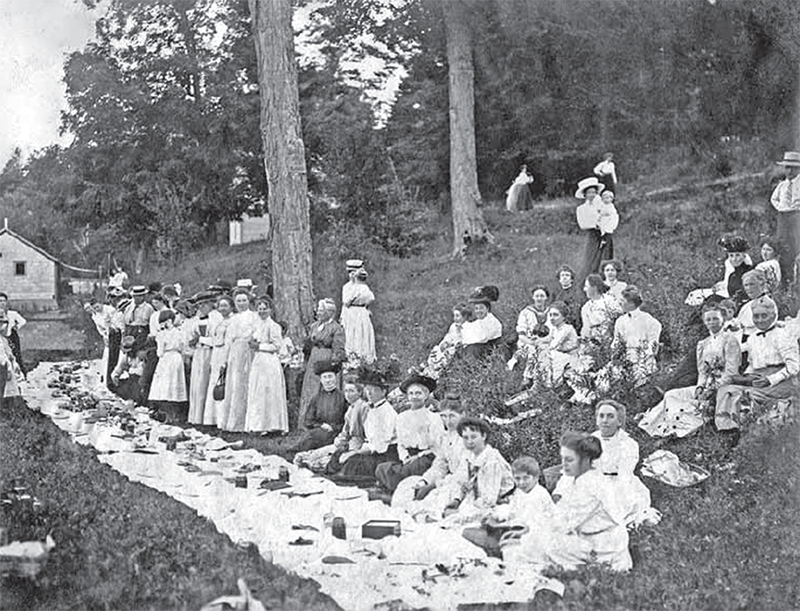
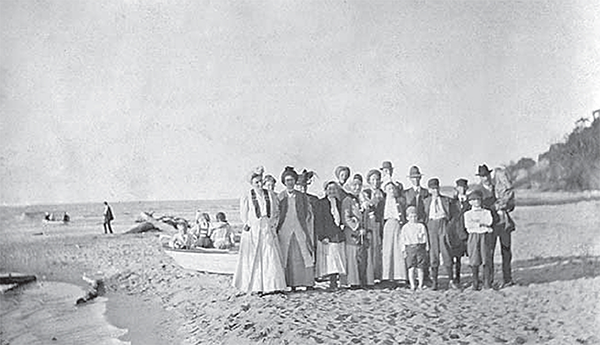
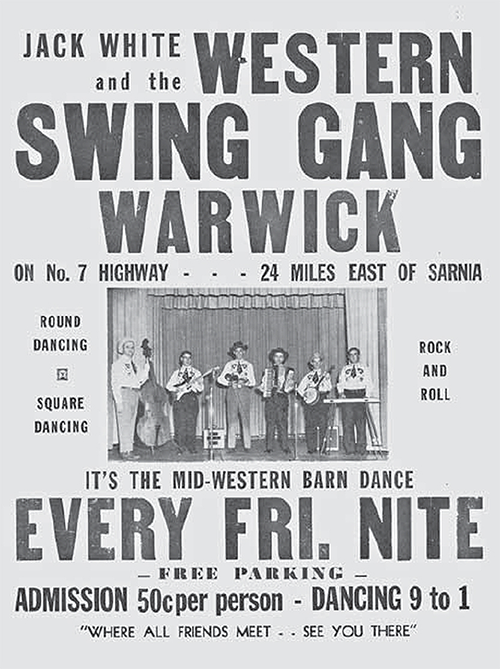
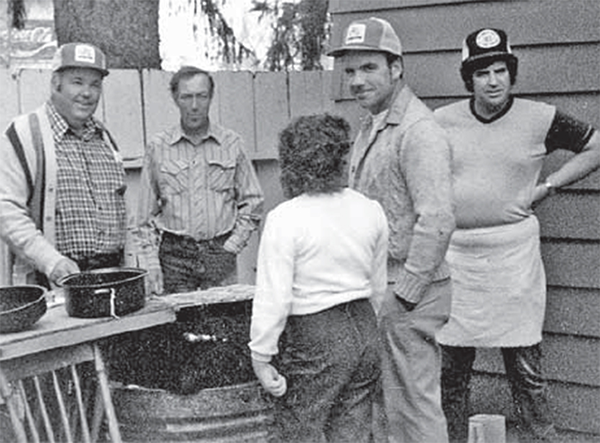
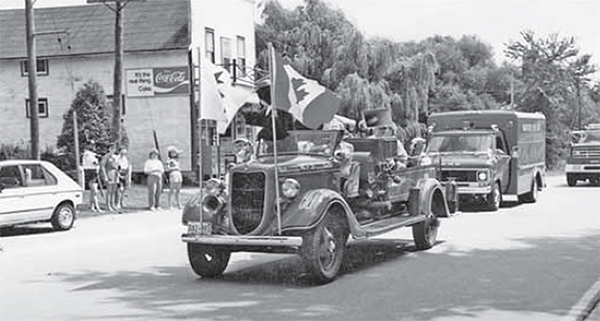
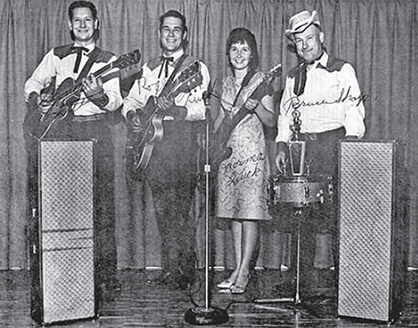
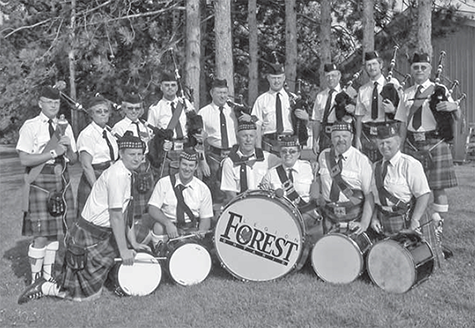
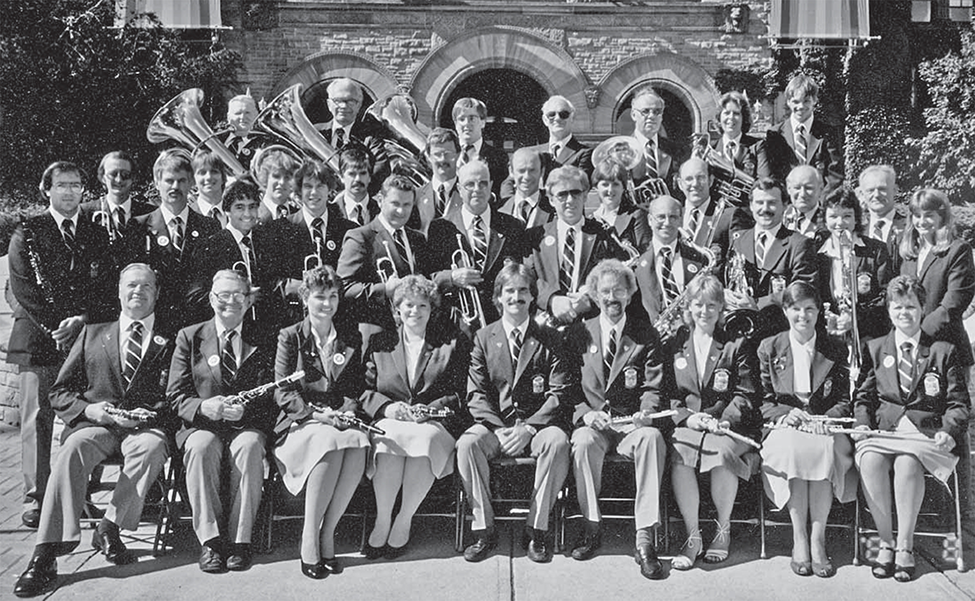
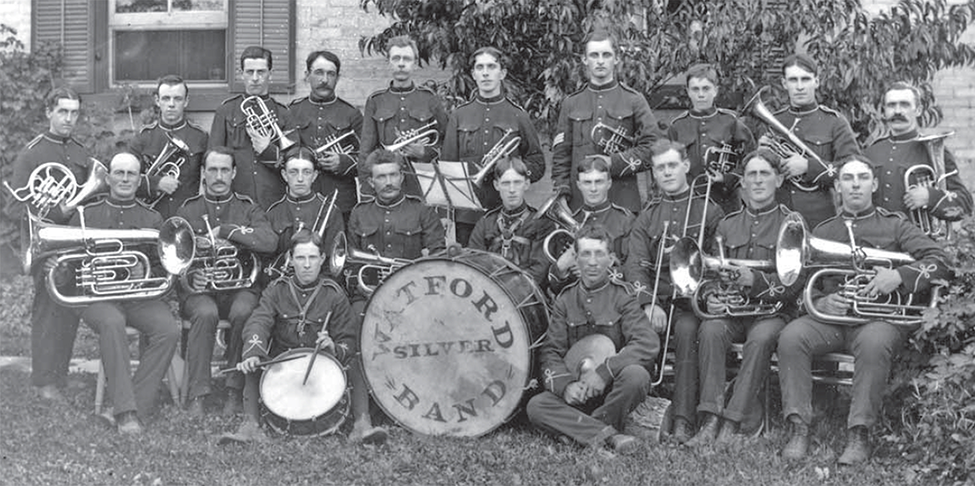
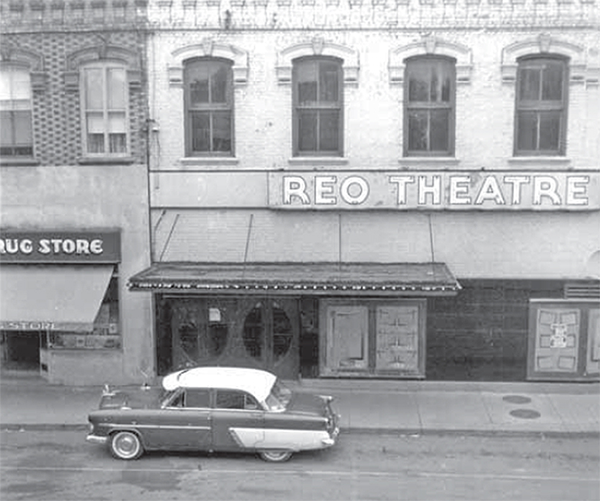
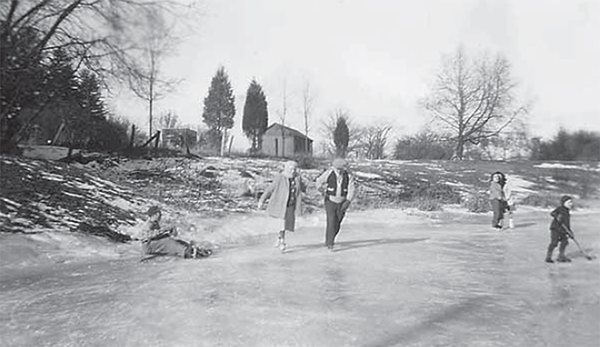
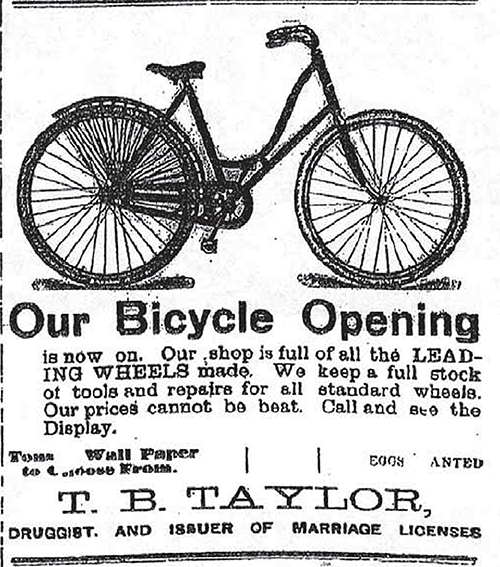
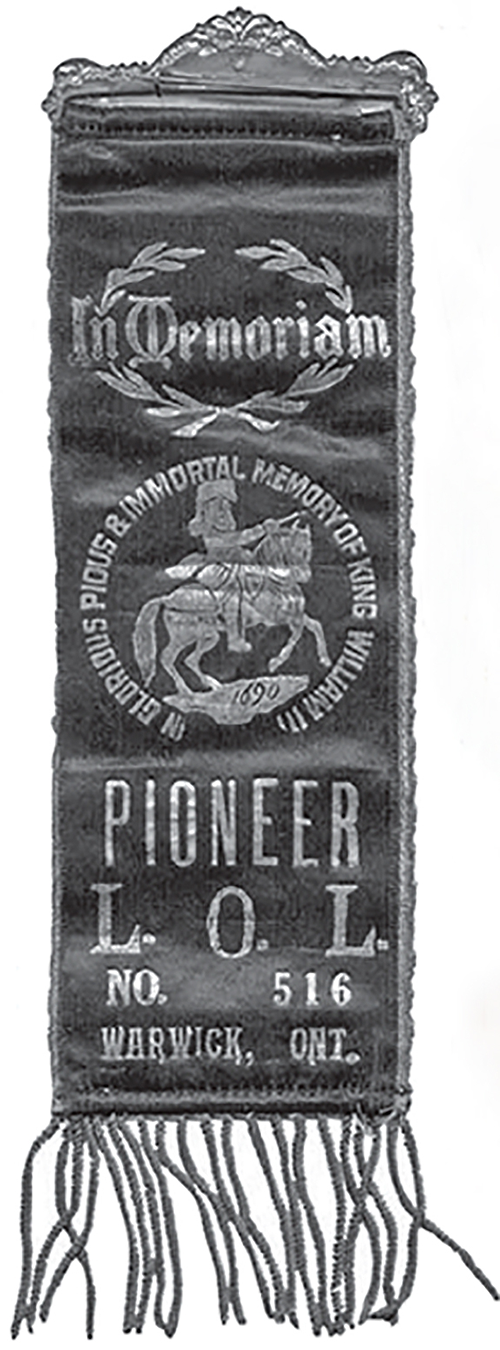
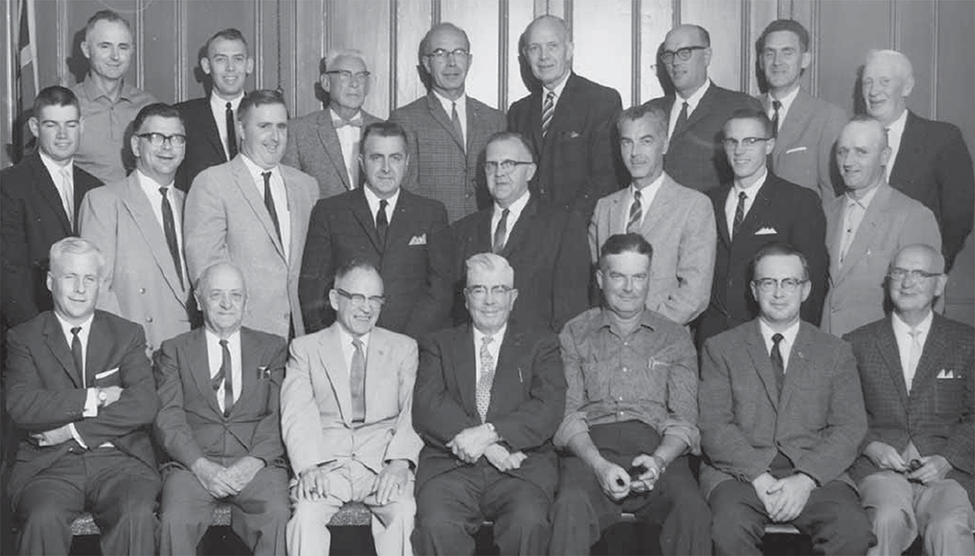
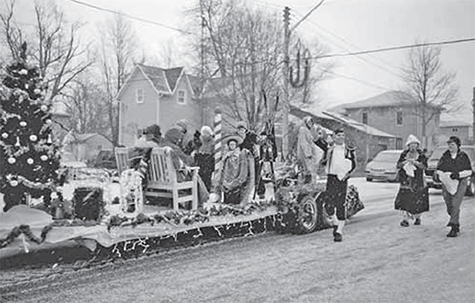
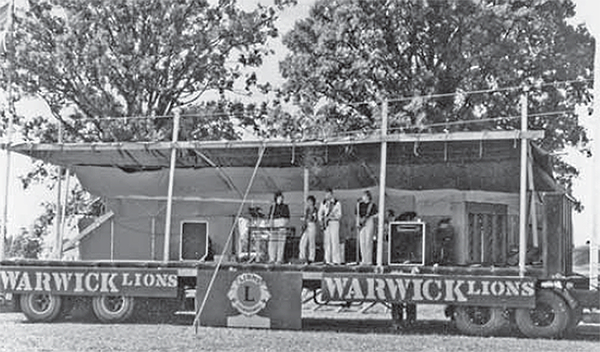
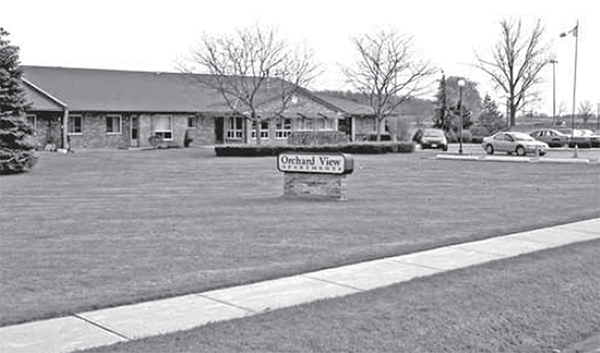
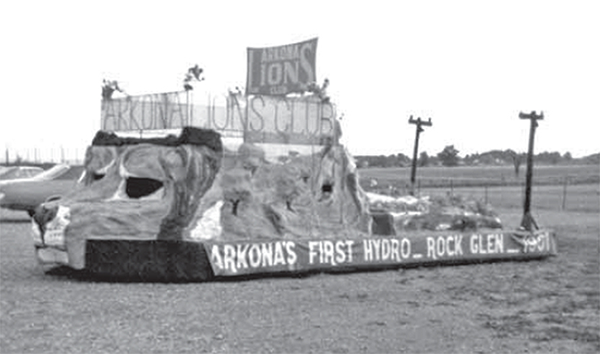
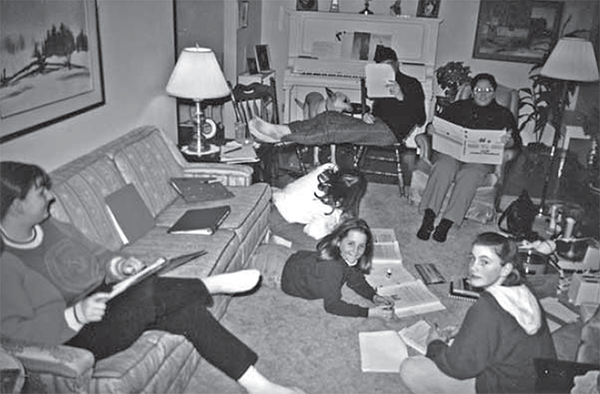
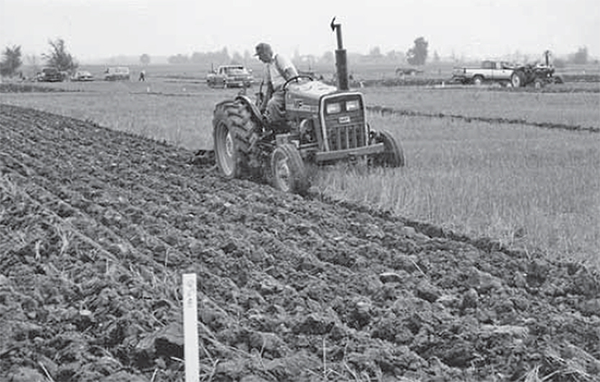
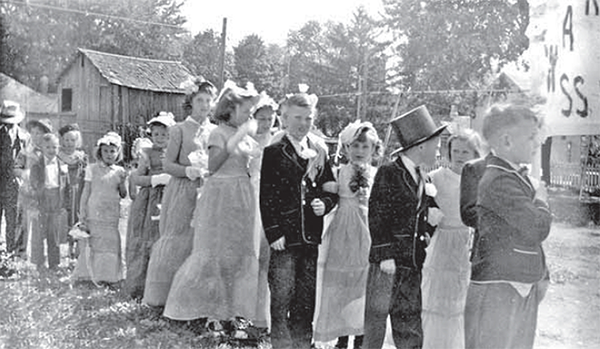
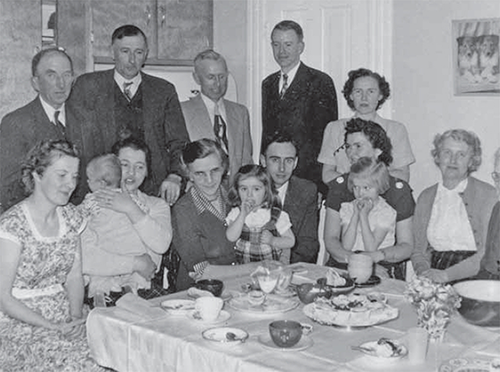
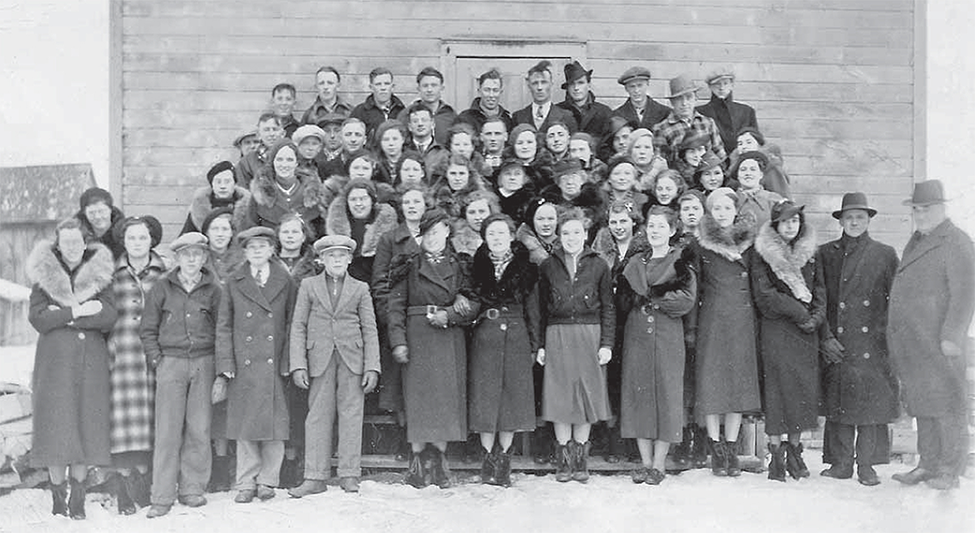
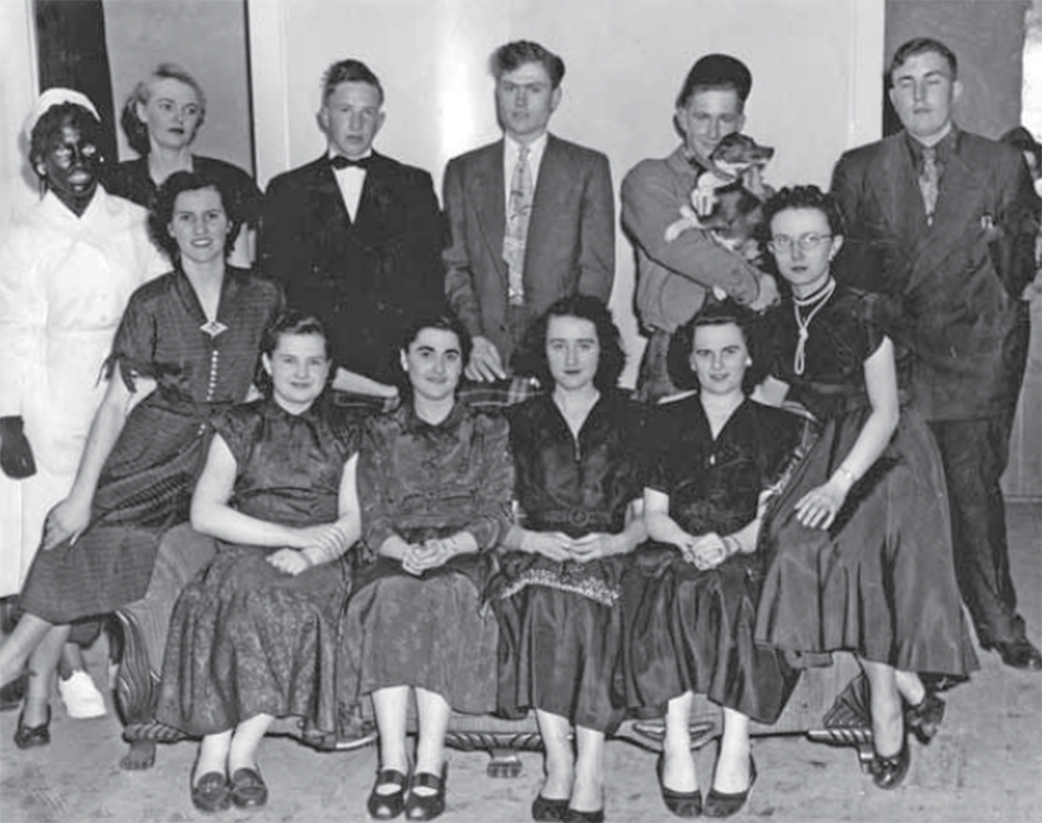
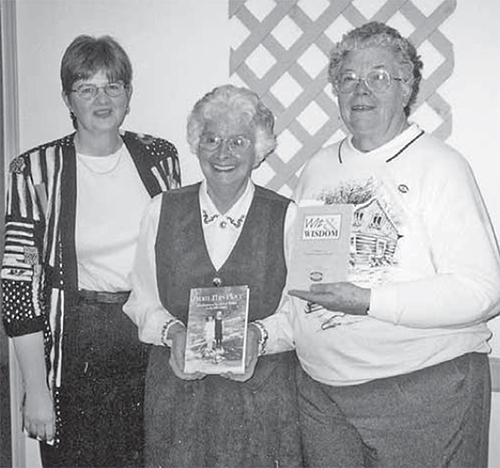
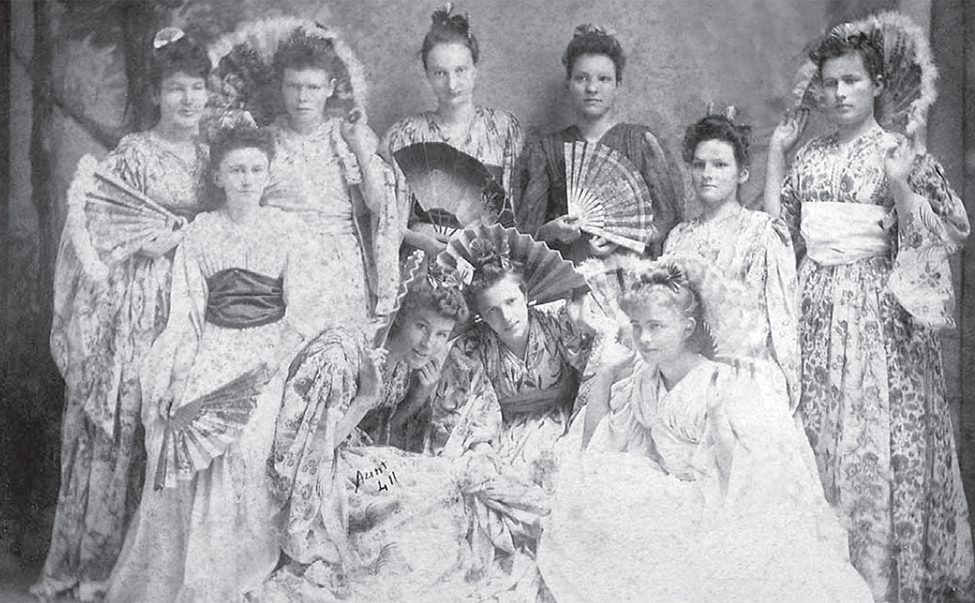
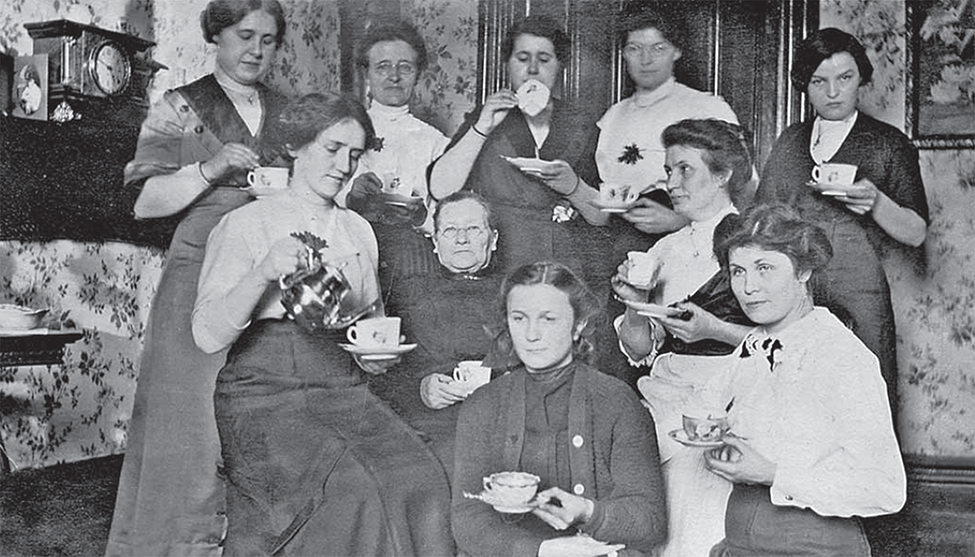
 Subscribe to this page
Subscribe to this page